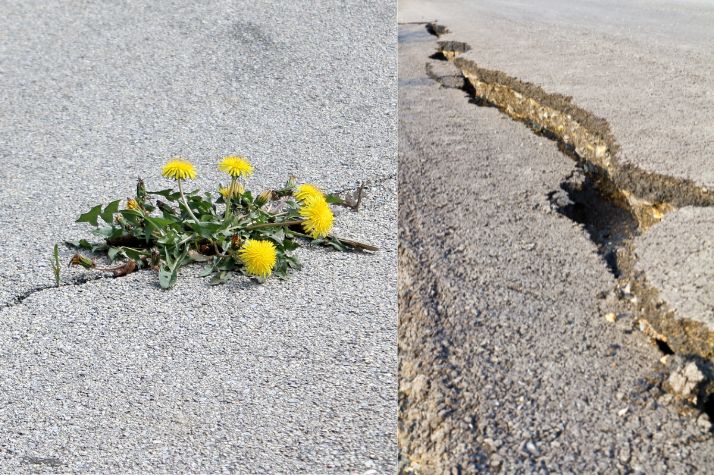 (226) 243-8375
(226) 243-8375


As property owners, we tend to ignore a lot of things. We tend to look at that asphalt driveway or parking lot and conclude that everything is fine when it is not. Asphalt cracks are delicate, and certain types of asphalt cracks need immediate repairs.
If you are torn in-between repairing or not repairing your asphalt driveway or parking lot, here are the types of cracks you need to repair immediately.
Longitudinal cracks develop parallel to the pavement’s centerline. They may result from asphalt layer shrinkage, faulty paver work, fractures projecting up from a lower layer, improperly designed joints, or longitudinal segregation. Longitudinal cracking does not occur due to load on the asphalt surface.
Another crack that needs immediate attention is the transverse crack. This sort of crack develops at right angles to the pavement’s centerline. This might occur as a reflection of underlying cracks. It can also occur due to the shrinking of the asphalt layer. Just as we mentioned with longitudinal cracking, it is not a load-related crack.
Block cracking is a pattern of wide, boxy fractures on the face of an asphalt pavement, usually measuring about a foot or more. This kind of cracking frequently affects wide areas and can appear in places with little activity. Block cracking is typically brought on by surface shrinking or temperature fluctuations.
If your driveway or parking lot requires asphalt crack repair for large cracks, it is recommended that you contact professionals from Arktic Asphalt Sealing. If you want to try it yourself, here are some things you need to do.
Aside from the larger cracks, there are other cracks to consider and repair. These are ten of the major asphalt cracks and how to repair them.
Ice cracking is an asphalt crack that occurs in winter and fall months due to major temperature changes. This weakens the asphalt aggregates causing cracks.
How to Repair: seal coating all the cracks immediately.
The alligator crack is another common type that causes asphalt deterioration. It gets its name from its appearance, which looks like an alligator. It is caused by a weakened base, overloading and a light pavement.
How to Repair: seal coating or strengthening of the asphalt base.
This is a large rectangular crack on the surface of your asphalt. When the binding particles of your asphalt cannot handle the temperature expansion and contraction, it cracks.
How to Repair: for larger cracks, you need to use a crack sealant. For larger block cracks, you need a professional asphalt maintenance conductor to handle a pavement layer overlay.
This is an asphalt depression that goes past the complete layer. If not taken care of quickly, it tends to expand and become a bigger problem.
How to Repair: remove all of the dirt from the pothole, make it a square pothole and then fill it with patching material.
These are cracks at the outer edge of your asphalt driveways, and this occurs as a result of a lack of support on those edges. If there is a lot of traffic on these edges, it could cause edge cracking.
How to Repair: this can be repaired with the use of sealant, the addition of drainage on the side and full edge replacement.
This is a crack that is caused by contraction or expansion of the underlying layer of the asphalt binder.
How to Repair: How to Repair: flush fill crack seal, simple overband crack seal, or major overband crack seal.
This is a parallel crack that runs in the direction of the asphalt pavement. It is caused by temperature fluctuations or poor construction.
How to Repair: Use crack sealants and professional inspection for larger cracks.
This is cracking that occurs as a result of poor bonding of the layers of the asphalt pavement. With continuous traffic, this becomes a lot bigger.
How to Repair: gap patch repair or rectangular pothole repair.
This sort of asphalt crack occurs as a result of rigid pavement joints. It is caused by moisture and thermal changes.
How to Repair: Use a crack seal to prevent moisture entry.
In an irreversible process, bleeding happens when too much asphalt binder fills the gaps in the aggregate mat and then rises to the surface under traffic with thermal expansion.
How to Repair: for minor bleeding, applying coarse sand can correct the situation. For major bleeding, cutting off the asphalt and resurfacing is a good solution.
There are different asphalt cracks requiring immediate repairs. This is where you need the services of professionals from Arktic Asphalt Sealing. Our team of experts understands the different types of Asphalt cracks and the recommended solutions. For more information, give us a call or fill out our free estimate form today.